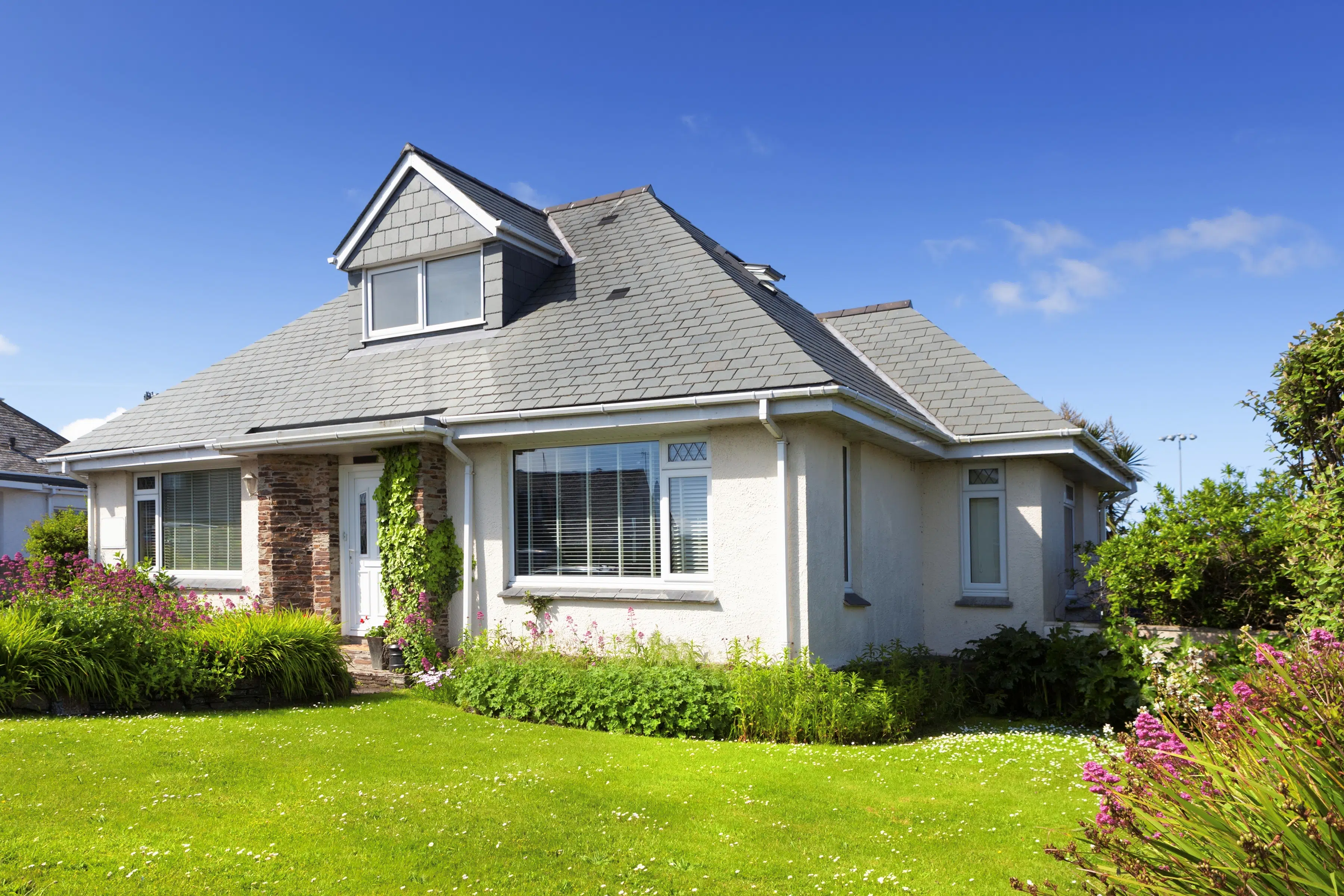Stucco siding is a durable material with lots of character that can brighten up your curb appeal as well as protect your home from the elements. Stucco actually forms a solid shield around the house when it is properly installed, and it can be a quick and cost-effective project. But before you make this decision, did you know that there is more than one kind of stucco cladding for your house?
These are your different options: traditional and synthetic, or External Insulation and Finishing Systems (EIFS) stucco. So how are you suppose to know which one is the best for your home?
Although both systems sound similar at first glance, EIFS and traditional stucco have differences that change how the stucco functions. So let’s take a look at the differences between stucco and EIFS.
TRADITIONAL STUCCO:
Generally, when someone is talking about regular stucco, they are referring to the traditional style of stucco. This is a natural mixture of Portland cement, limestone powder, sand, and water. This stucco is then applied to a building using a 3-coat system that puts the stucco mix over a base mesh that looks similar to chicken wire but is entirely different. From there, it is spread with the trowel over the ceiling, walls, and other surface where the stucco is being applied. Textured finishes and colors can be added to enhance the overall look and feel.
BENEFITS OF TRADITIONAL STUCCO:
Traditional stucco has been a long-standing favorite in architecture for good reason: It’s a beautiful siding to work with. It is also highly affordable for both homeowners and contractors.
Also because Stucco cures quickly, is easy to repair, making any potential remediation not much of a hassle. You are also able to add more decorative elements than with EIFS stucco, because of how simple the system is.
CONS OF STUCCO:
- Stucco is heavy, weighing about 10 pounds per square foot.
- When damaged, traditional stucco will require remediation of an entire wall.
- Stucco is prone to cracking over time, as well as water damage. If water gets into a traditional stucco system, there can be cracking, peeling, chipping, and even structural damage throughout the whole wall.
- Stucco is susceptible to buckling in extreme weather. It can become very high maintenance in places with quickly changing seasons and varying weather patterns.
EIFS:
Unlike traditional stucco that utilizes natural ingredients and mesh, External Insulation and Finishing Systems (EIFS) stucco uses layers that add in synthetic materials. The first layer is comprised of a polystyrene foam board. Then, that is followed by a fiberglass mesh and a finishing coat. Some systems add in water-resistant barriers or other layers. When such layers are applied, EIFS provides more protection and insulation than traditional stucco—but it also comes with some risks.
BENEFITS OF EIFS FOR YOUR HOUSE:
The leading reason EIFS has gained popularity is the increased insulation. EIFS is also more flexible than traditional stucco as well, so there is less cracking and crumbling as a result of shifting foundations or thermal expansion. The fiberglass layer provides more durability, even against hard blows from weather.
EIFS is notably lighter than traditional stucco, however. It is 80-percent less heavy than stucco, but it has a higher R-value, coming in between 4 and 5.6, which is notably higher than the 0.20 R-value of regular stucco.
CONS OF EIFS STUCCO:
- The installation process for EIFS stucco is much more complicated and time-consuming than traditional stucco. The multiple layers also need to be installed by an expert, since the risk of error runs high.
- EIFS is more costly than traditional stucco.
- You need to hire a professional contractor to install EIFS. Without a trustworthy and experienced contractor on the team, EIFS is easy to mess up, and that can result in a lack of water resistance and long-term damages down the road.
- More difficult to customize compared to traditional stucco.
WHAT IS THE BEST FOR YOUR HOME?
When you consider the differences of cost, installation, and maintenance, you might end up asking a questions such as, “How do I decide what’s best for my home?”
This answer is dependent on different factors that separate traditional and synthetic stucco. A general rule of thumb is this: Consider your budget, whether you would like a stylized wall or color, and your climate. If you live somewhere that receives a lot of inclement weather and precipitation, you might want a properly installed EIFS house. If you live somewhere with more constant temperatures and drier air, than traditional stucco might be best for you.
However, there is no denying that EIFS is a versatile and durable system, despite the higher price tag.

